This is a drawing of the evolution of the interior of an icy moon.
Image from: The New Solar System
How Titan Formed
Titan is similar to the other
icy moons, but Titan is the only icy moon to have a big atmosphere. It is natural to ask how is this possible?
The nebula was colder near Saturn, than near Jupiter. The nebula near Titan was cold enough to allow the molecule Nitrogen to become solid.
Thus Titan is probably made of Nitrogen ice, and, because Saturn is giving off heat, it is warm enough for Nitrogen to evaporate to form an atmosphere.
The difference between Ganymede and Titan, is that Titan formed in a region cold enough for solid Nitrogen to form. The difference between Titan and Triton, is that Titan is presently in a region that is warm enough for the slow evaporation of Nitrogen.
You might also be interested in:
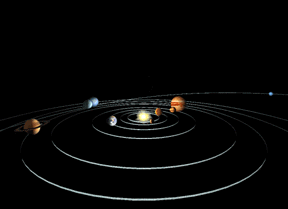
Scientists believe that the solar system was formed when a cloud of gas and dust in space was disturbed, maybe by the explosion of a nearby star (called a supernova). This explosion made waves in space
...more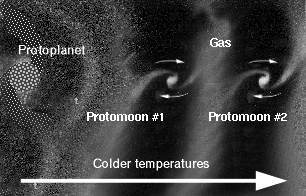
Titan is similar to the other icy moons, but Titan is the only icy moon to have a big atmosphere. It is natural to ask how is this possible? The nebula was colder near Saturn, than near Jupiter. The nebula
...more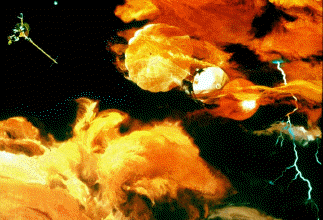
Titan's atmosphere is a lot like the Earth's, except that it is very cold, from -330 degrees to -290 degrees! Like the Earth, there is a lot of Nitrogen and other complex molecules. There also may be an
...more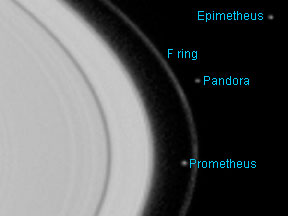
Pandora is a small moon of Saturn. It was discovered by S. Collins and others in 1980 from photos taken by the Voyager 1 spacecraft. Pandora's name comes from Greek mythology. Pandora was the first woman,
...more
Prometheus is a small moon of Saturn. It was discovered by S. Collins and others in 1980 from photos taken by the Voyager 1 spacecraft. This moon's name comes from Greek mythology. Prometheus was a Titan
...more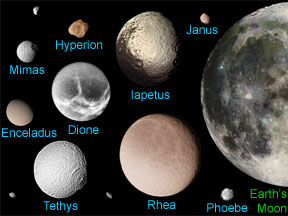
Saturn has // Call the moon count function defined in the document head print_moon_count('saturn'); moons. Many of those are tiny chunks of rock or ice only a few kilometers (miles) across. One of Saturn's
...more
Saturn has // Call the moon count function defined in the document head print_moon_count('saturn'); moons. Many of those are tiny chunks of rock or ice only a few kilometers (miles) across. One of Saturn's
...more













